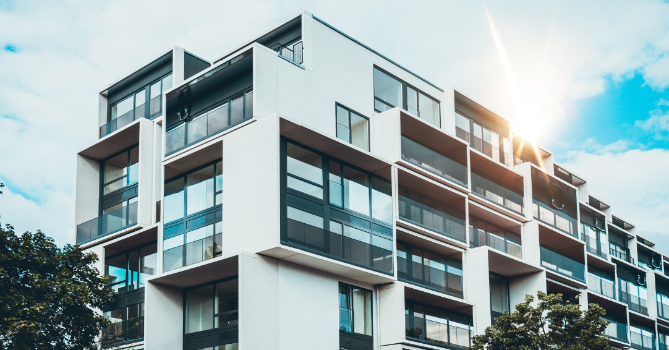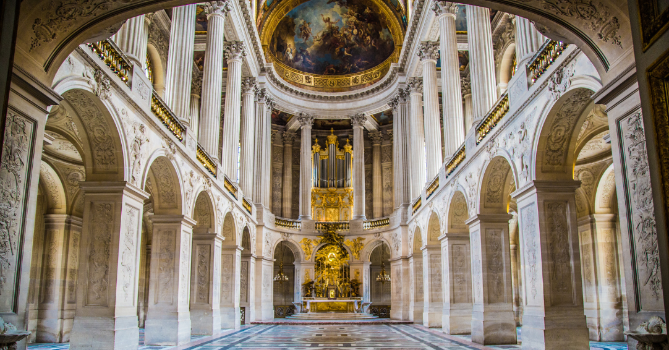
The Future of Architecture: Sustainable Innovations and Design
Architecture is evolving. It’s becoming smarter, greener, and more connected to its surroundings. The future of architecture is a blend of sustainability, adaptability, and storytelling. These elements come together to create buildings that are not just structures but living parts of our environment.
Sustainable design aims to minimize environmental impact. Adaptability ensures buildings can handle changes, from climate to occupant needs. Storytelling in architecture reflects the culture and history of its location, making each building unique and meaningful.
This blog explores how these three principles shape modern architecture. We will look at real-world examples and future trends, showing how the built environment can become more resilient and harmonious with nature. Join us as we delve into the exciting future of architecture.
Sustainability is a key focus in modern architecture. It aims to reduce the negative impact buildings have on the environment. Architects are finding innovative ways to make buildings more eco-friendly. This includes using green building practices, energy-efficient designs, and renewable materials.
Energy efficiency is crucial. Buildings consume a lot of energy, mostly for heating, cooling, and lighting. By using better insulation, energy-efficient windows, and smart systems, we can cut down this consumption. Solar panels and wind turbines are also being used to generate renewable energy on-site.
Water conservation is another important aspect. Sustainable buildings use systems to recycle water. Rainwater harvesting systems collect and store rainwater for use in toilets and irrigation. Low-flow fixtures reduce water usage inside the building. These practices help conserve water and reduce the strain on local water supplies.
Materials play a significant role too. Architects are using recycled, reclaimed, and renewable materials. For instance, recycled steel, reclaimed wood, and bamboo are popular choices. These materials reduce the demand for new resources and minimize waste. Green roofs and walls, which are covered with vegetation, help insulate buildings and reduce urban heat islands.
Indoor environmental quality is also a focus. Good air quality and natural light improve the health and well-being of occupants. Sustainable buildings often include features like advanced ventilation systems and large windows to ensure plenty of natural light.
In summary, sustainable architecture incorporates energy efficiency, water conservation, eco-friendly materials, and healthy indoor environments. These practices not only help protect the planet but also create better living and working spaces. As more buildings adopt these principles, we move closer to a greener, more sustainable future.
Adaptability and resilience are essential in modern architecture. As climate change and urbanization progress, buildings must be designed to handle various challenges. Architects are now focusing on making structures that can adapt to different conditions and needs over time.
One way to achieve this is through flexible design. Buildings with adaptable spaces can be easily reconfigured to meet changing requirements. For instance, open floor plans allow for different layouts, making it easier to repurpose areas for new uses. This flexibility is crucial for both residential and commercial buildings.
Resilient design is another key aspect. It involves creating buildings that can withstand extreme weather events like hurricanes, floods, and heatwaves. This includes using stronger materials, elevating structures in flood-prone areas, and incorporating features like storm shutters and reinforced windows. These measures help protect buildings and their occupants from natural disasters.
Retrofitting is also important. Upgrading existing buildings to improve their energy efficiency and resilience is a sustainable practice. This can include adding insulation, installing energy-efficient windows, and upgrading heating and cooling systems. Retrofitting not only extends the life of a building but also reduces its environmental impact.
Modular and prefabricated construction methods are gaining popularity too. These methods involve building sections of a structure in a factory and then assembling them on-site. This approach reduces construction time, minimizes waste, and allows for more precise quality control. It also enables buildings to be easily expanded or reconfigured as needed.

In summary, adaptability and resilience in architecture ensure that buildings can meet the demands of the future. By incorporating flexible designs, resilient features, retrofitting existing structures, and using modular construction methods, architects can create buildings that are prepared for various challenges. This approach not only enhances the functionality of buildings but also contributes to a more sustainable and resilient built environment.
Architecture is not just about creating functional spaces; it's also about telling stories. Through design, architects can reflect the culture, history, and values of a place. This storytelling aspect makes buildings unique and meaningful, connecting them to their surroundings and the people who use them.
One way architects achieve this is by drawing inspiration from nature and local traditions. Biomimetic architecture, for example, uses natural forms and processes to solve design challenges. The Watercube National Aquatics Center in Beijing, inspired by the structure of soap bubbles, is a great example. This design not only provides structural strength but also creates a visually stunning and efficient building.
Local culture and history also play a significant role. The Al Bahar Towers in Abu Dhabi, inspired by the traditional Islamic mashrabiya, feature a dynamic facade that opens and closes in response to the sun. This not only reduces solar heat gain but also connects the building to its cultural heritage.
Architects also use materials to tell stories. The use of local, sustainable materials can highlight regional identity and promote environmental responsibility. For instance, the Shanghai Natural History Museum uses a spiral form inspired by a nautilus shell, reflecting the natural world both in shape and function.
Storytelling in architecture extends to creating spaces that evoke emotions and experiences. The design of a building can influence how people feel and interact with it. Spaces that incorporate natural light, greenery, and thoughtful details can create a sense of calm and connection to nature. This approach is evident in buildings like the Milwaukee Art Museum, where the structure mimics the form of a bird in flight, creating a dynamic and inspiring space.
In summary, storytelling through design makes architecture more than just a physical structure. It creates spaces that resonate with people, reflecting the culture, history, and environment in which they exist. By integrating natural inspirations, local traditions, and thoughtful details, architects can craft buildings that tell compelling stories and enrich our lives.

Technology is revolutionizing architecture, making buildings smarter and more sustainable. One key innovation is Building Information Modeling (BIM). BIM creates detailed 3D models that help architects, engineers, and builders collaborate more effectively. These models include information on every aspect of the building, from materials to energy use. This improves accuracy, reduces waste, and enhances project management.
3D printing is another groundbreaking technology. It allows for the creation of complex building components with minimal waste. 3D printed structures can be produced quickly and with high precision, using materials like concrete, plastic, and even recycled materials. This method is not only efficient but also opens up new possibilities for design, enabling more creative and sustainable structures.
Artificial Intelligence (AI) and machine learning are also transforming architecture. These technologies analyze vast amounts of data to optimize building designs for energy efficiency and sustainability. AI can predict how different design choices will impact a building’s performance, helping architects make informed decisions. This leads to buildings that are not only more efficient but also better suited to their environments.
The Internet of Things (IoT) is making buildings smarter. IoT devices collect and share data on various aspects of building performance, such as energy usage, lighting, and temperature. This data helps manage buildings more efficiently, reducing energy consumption and improving comfort for occupants. Smart buildings can adapt to their users' needs in real-time, making them more responsive and sustainable.
In summary, technological innovations like BIM, 3D printing, AI, and IoT are transforming architecture. These technologies make buildings more efficient, sustainable, and adaptable, paving the way for a future where architecture is both advanced and environmentally responsible.
Sustainable architecture faces several challenges and criticisms. One major challenge is the high initial cost. Building sustainably often requires significant investment in materials, design, and technology. This can make it difficult for some developers and building owners to justify the upfront expenses, even though sustainable buildings can save money in the long run through lower energy and maintenance costs.
Another issue is the availability of sustainable materials. While demand for these materials is growing, they are not always accessible in all markets. This can limit architects' ability to incorporate eco-friendly options into their designs. Additionally, sustainable materials can sometimes be more expensive than traditional ones, adding to the overall cost of construction.
Balancing aesthetics, functionality, and sustainability is also a challenge. Architects must design buildings that are not only environmentally friendly but also visually appealing and practical for everyday use. This balancing act can be difficult and sometimes leads to compromises that affect the overall success of a project.
There is also resistance to change. Some developers and building owners are hesitant to adopt sustainable practices, either due to a lack of understanding of the benefits or a preference for traditional methods. This resistance can slow the adoption of green building practices across the industry.
Despite these challenges, the push for sustainable architecture continues to grow. Ongoing education, policy support, and technological innovation are helping to overcome these barriers, promoting a future where sustainable building is the norm rather than the exception.
The future of architecture lies in the integration of sustainability, adaptability, and storytelling. By embracing these principles, architects can create buildings that are environmentally friendly, resilient, and culturally significant. Technological advancements like BIM, 3D printing, AI, and IoT are driving this transformation, making it easier to design and construct smarter, greener buildings. Despite challenges like high initial costs and resistance to change, the push for sustainable architecture is gaining momentum. As we continue to innovate and educate, we can build a more sustainable and resilient future, ensuring that our built environment harmonizes with the natural world.